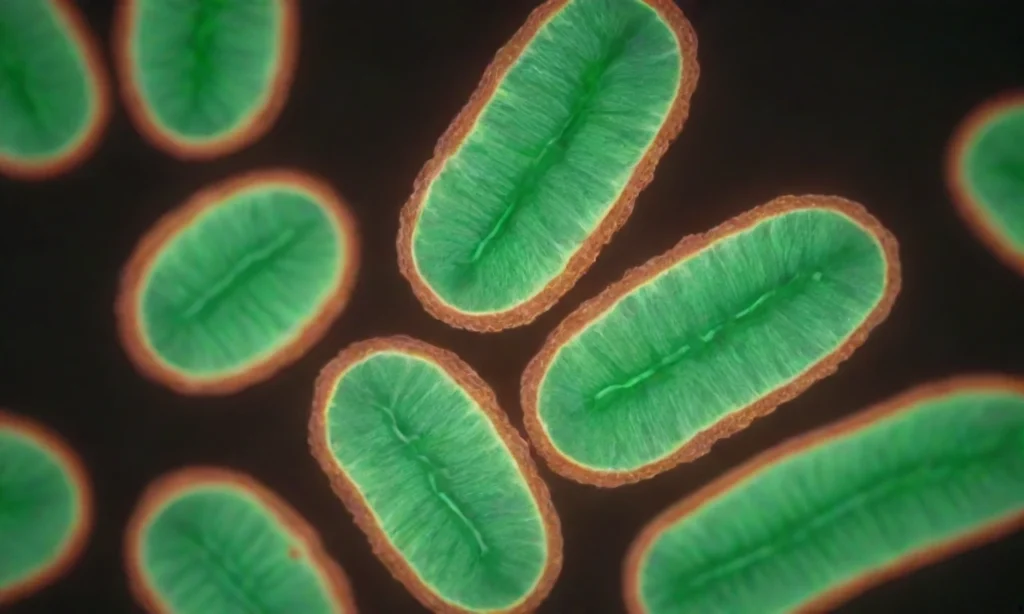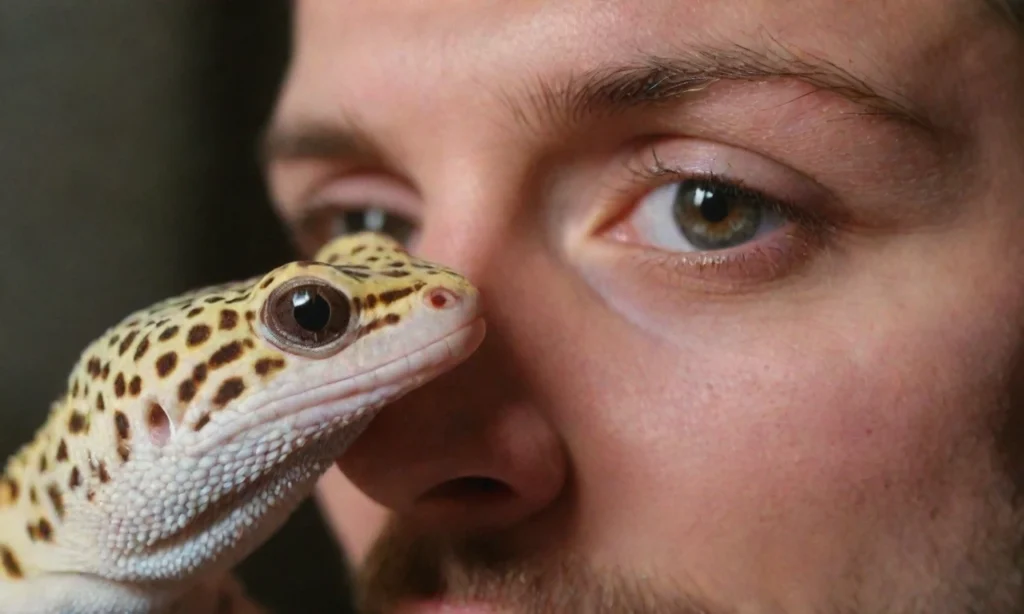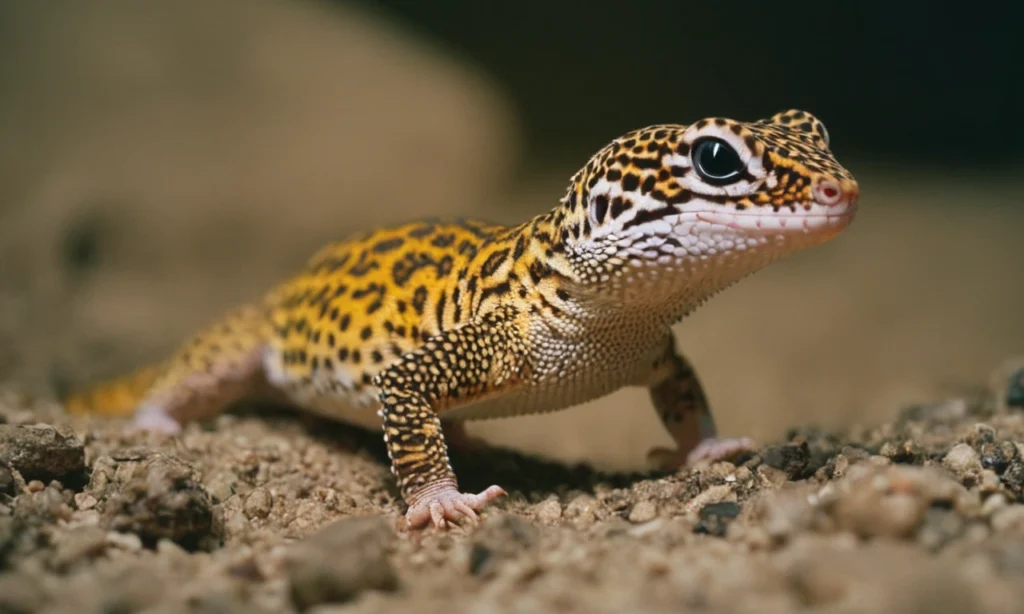
If you’re a leopard gecko owner or thinking of getting one, you might wonder, “Do leopard geckos carry salmonella?” While the risk is lower than with some other reptiles, it’s important to understand how salmonella can spread and the best practices for keeping yourself and your pet safe. This guide will answer your questions and give you the information you need.
Understanding Salmonella- A Hidden Threat
Salmonella, a term often heard but perhaps not fully understood, is more than just a word. It’s a group of bacteria that can cause illnesses in humans and animals, including our beloved leopard geckos.
What is Salmonella?
Salmonella is a genus of bacteria known to cause a disease called salmonellosis. This disease can lead to uncomfortable symptoms in humans, such as diarrhea, fever, and abdominal cramps. In severe cases, it can even lead to life-threatening complications like septicemia, an infection that spreads throughout the body.
Salmonella- A Closer Look
Salmonella is a type of bacteria that can cause salmonellosis, a common food-borne illness. There are over 2,000 different types, or serotypes, of Salmonella that can cause illness in humans. Some of these serotypes are more common in certain animals, including reptiles like leopard geckos.

Leopard Geckos and Salmonella
Now, you might be wondering, “Do leopard geckos carry Salmonella?” The answer is yes. Leopard geckos, like many other reptiles, can carry Salmonella in their digestive tract without showing any signs of illness. This means that even a healthy-looking leopard gecko can potentially transmit Salmonella to humans.
How Does Salmonella Affect Leopard Geckos?
While leopard geckos can carry Salmonella, they typically do not show any signs of illness. However, they can shed the bacteria in their feces, which can contaminate their environment. This is why it’s important to maintain good hygiene when handling leopard geckos and their habitat.
The Role of Leopard Geckos in Salmonella Outbreaks
Over the years, there have been several outbreaks of Salmonella infections linked to pet reptiles, including leopard geckos. These outbreaks highlight the importance of proper handling and care of pet reptiles to prevent Salmonella infections.
Preventing Salmonella Infections from Leopard Geckos
Preventing Salmonella infections involves several steps, including washing hands thoroughly after handling leopard geckos or cleaning their habitat, avoiding contact between leopard geckos and food or food preparation areas, and keeping leopard geckos out of areas where vulnerable individuals, such as young children or people with weakened immune systems, may be exposed.
The Invisible Link
The transmission of Salmonella from leopard geckos to humans usually occurs when an individual handles the gecko or comes into contact with its environment and then touches their mouth or food without washing their hands. This makes understanding and preventing Salmonella infection crucial for every leopard gecko owner.

Do Leopard Geckos Carry Salmonella?
Leopard geckos, like many other reptiles, can carry Salmonella in their digestive tract. This is a fact that often surprises many pet owners. Despite their small size and seemingly harmless nature, these adorable creatures can harbor this potentially harmful bacteria.
Healthy but Silent Carriers
Interestingly, leopard geckos can carry Salmonella without showing any signs of illness. They can appear perfectly healthy while carrying the bacteria. This is because the bacteria naturally reside in their intestinal tract. However, they can shed the bacteria in their feces, which can contaminate their environment.
The Risk to Humans
The risk to humans comes from direct or indirect contact with the feces of the leopard gecko. For instance, if a person handles a leopard gecko or cleans its habitat and then touches their mouth or food without washing their hands, they could ingest the bacteria.
The Severity of the Risk
While most people who get Salmonella infection experience mild symptoms, the infection can be severe or even life-threatening for some, especially those with weakened immune systems. Therefore, it’s crucial for leopard gecko owners to be aware of this risk and take appropriate precautions.
The Prevalence of the Issue
It’s important to note that not all leopard geckos carry Salmonella, and not all people who come into contact with leopard geckos will get a Salmonella infection. However, the risk is there, and it’s a part of owning a leopard gecko that all potential owners should be aware of.
The Role of Captivity in Salmonella Carriage
Leopard geckos in captivity may have a higher likelihood of carrying Salmonella due to stress, poor diet, or unsanitary conditions. It’s essential for owners to provide a clean, stress-free environment and a balanced diet for their pets to minimize the risk.
The Importance of Veterinary Care
Regular veterinary check-ups can help detect the presence of Salmonella in leopard geckos early. Veterinarians can also provide advice on preventing the spread of the bacteria.
The Impact of Education
Educating yourself and others about the risks associated with owning a leopard gecko, including the risk of Salmonella, can go a long way in preventing infections. Knowledge is power, and in this case, it can also be a lifesaver.
How Can Humans Get Salmonella from Leopard Geckos?
Salmonella is a type of bacteria that can be found in the digestive tract of many animals, including leopard geckos. These bacteria are shed in the feces of the gecko and can contaminate their environment.

Direct Contact
The most common way humans can get Salmonella from leopard geckos is through direct contact. This can occur when a person handles a leopard gecko or cleans its habitat without properly washing their hands afterwards. If the person then touches their mouth or food, they could ingest the bacteria and become infected.
Indirect Contact
Indirect contact is another way humans can get Salmonella from leopard geckos. This can happen when the bacteria from the gecko’s feces contaminate objects or surfaces in the environment. If a person touches these contaminated objects or surfaces and then touches their mouth or food, they could also become infected.
Importance of Hygiene
Proper hygiene is crucial in preventing Salmonella infection. This includes washing hands thoroughly after handling a leopard gecko or cleaning its habitat, and avoiding touching the mouth or food with unwashed hands. It’s also important to keep the gecko’s habitat clean and to promptly remove and dispose of feces.
Preventing Salmonella Infection
Preventing Salmonella infection from leopard geckos involves a combination of good hygiene practices and responsible pet ownership.
Good Hygiene Practices
Good hygiene is the first line of defense against Salmonella infection. Here are some hygiene practices to follow,
Handwashing: Always wash your hands thoroughly with soap and water after handling your leopard gecko or cleaning its habitat.
Avoid Touching Face: Try to avoid touching your face, especially your mouth, until you have washed your hands after handling your gecko.
Clean Habitat Regularly: Regularly clean and disinfect your gecko’s habitat and any items within it.
Responsible Pet Ownership
Being a responsible pet owner can also help prevent Salmonella infection,
Veterinary Care: Regular veterinary check-ups can help ensure your leopard gecko is healthy and not shedding Salmonella bacteria.
Safe Handling: Handle your leopard gecko safely. Avoid letting it roam freely in areas where food is prepared or eaten.
Education: Educate yourself and others in your household about the risks of Salmonella infection from leopard geckos and how to prevent it.
Special Considerations
Certain individuals are more at risk of serious illness from Salmonella, including young children, the elderly, and people with weakened immune systems. Extra precautions should be taken if these individuals are in contact with leopard geckos.

Common Diseases in Leopard Geckos
Leopard geckos, like all animals, can be susceptible to a variety of health issues. Here are some common diseases that can affect leopard geckos,
Metabolic Bone Disease (MBD)
Metabolic Bone Disease (MBD) is a common health issue in leopard geckos that are not provided with adequate calcium or vitamin D3 in their diet. This disease affects the skeletal system of the gecko, leading to symptoms such as a soft jaw, kinked tail, and difficulty walking. In severe cases, MBD can lead to deformities and fractures. Providing a balanced diet with the right amount of calcium and vitamin D3 can help prevent this disease.
Cryptosporidiosis
Cryptosporidiosis is a parasitic disease caused by the Cryptosporidium parasite. This disease can cause a range of symptoms in leopard geckos, including weight loss, lack of appetite, and regurgitation. In severe cases, it can be fatal. Maintaining a clean habitat and providing fresh water can help prevent this disease.
Respiratory Infections
Respiratory infections can occur in leopard geckos that are kept in conditions that are too cold or humid. Symptoms can include wheezing, mucus around the nostrils, and lethargy. In severe cases, a respiratory infection can lead to pneumonia. Maintaining the right temperature and humidity levels in the gecko’s habitat can help prevent respiratory infections.
Impaction
Impaction can occur if a leopard gecko ingests substrate or other indigestible materials. This can lead to a blockage in the digestive tract, causing symptoms such as a swollen belly, lack of appetite, and constipation. In severe cases, impaction can be life-threatening. Using a safe substrate and monitoring the gecko’s diet can help prevent impaction.
Skin Diseases
Leopard geckos can also suffer from a variety of skin diseases, including fungal and bacterial infections, mites, and shedding problems. These diseases can cause symptoms such as skin irritation, sores, and changes in skin color. Regularly checking the gecko’s skin and maintaining a clean habitat can help prevent skin diseases.
Remember, while we strive to provide accurate and up-to-date information, this article should not replace professional veterinary advice. Always consult with a qualified veterinarian if you have concerns about your pet’s health.
In Conclusion
While the risk of contracting salmonella from a captive-bred leopard gecko is relatively low, it’s never zero. By following the simple hygiene practices outlined above – especially thorough handwashing – you can significantly minimize the risk to yourself and others. This way, you can continue to enjoy the unique companionship of your leopard gecko without worry. Remember, responsible pet ownership keeps both you and your beloved reptile healthy and happy!
